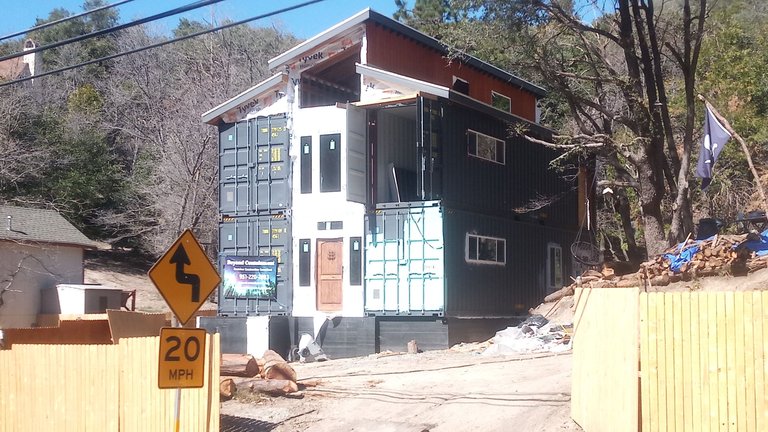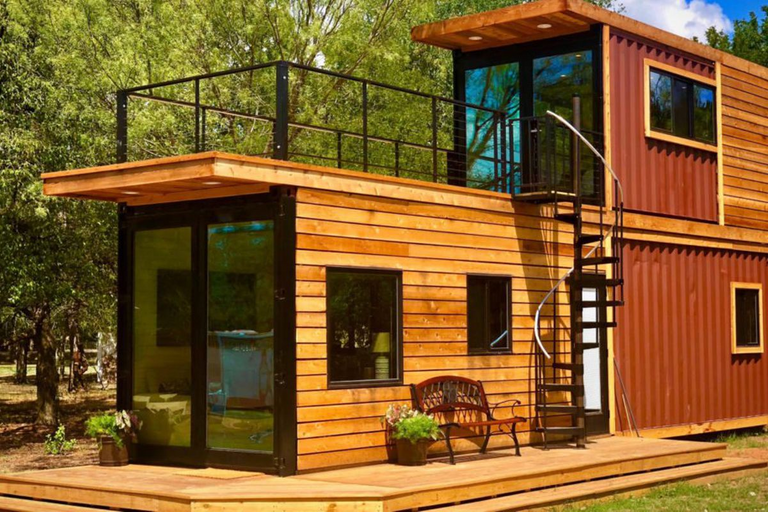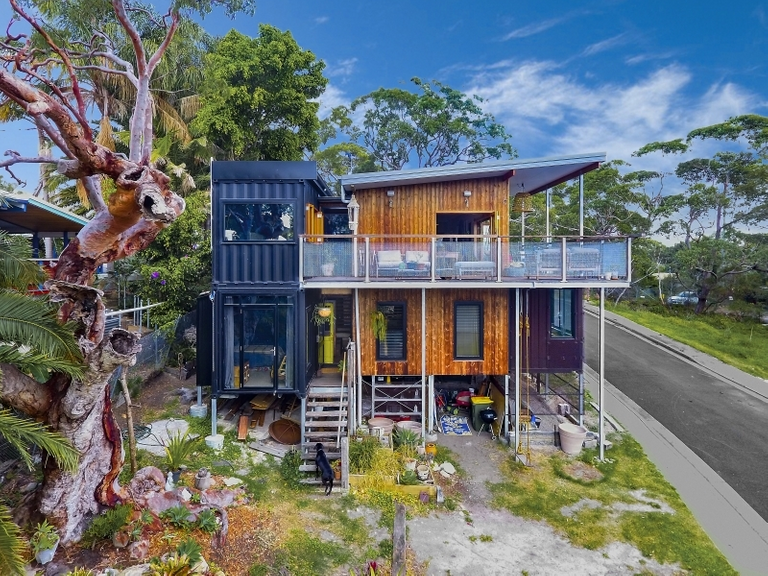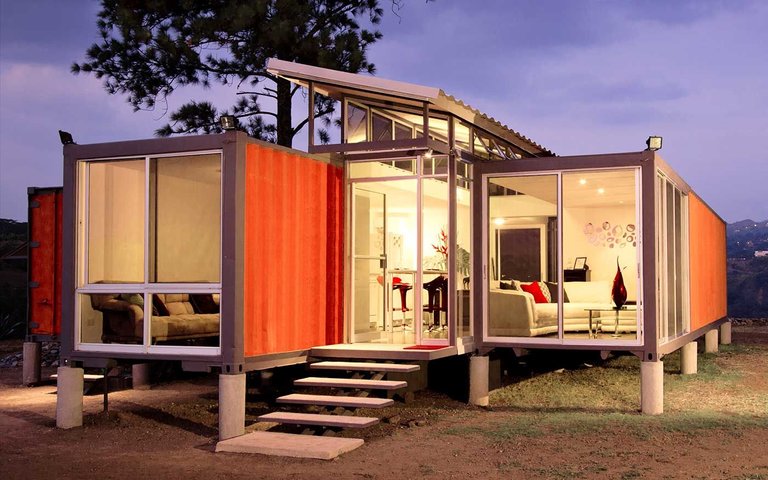After posting yesterday's post in the Street Art community, I realized that I had another photo that I took in Crestline of another use for old shipping containers: building homes out of them. This picture speaks volumes of not just the material but the type of structures you can make out of containers.

Natural Building? DIY Houses? Or Just More Commercial Industrial Stuff?
At this point I really should address these different categories that alternative buildings tend to be placed in, because the lines tend to get blurry, especially when you get into using shipping containers. First of all, it has nothing to do with natural material (though of course even Plutonium is natural, if you want to go that way). However, since most often we're talking about decommissioned containers repurposed for shelters, it does fall into the recycled category, which has its ethical aspects. Still, it's a hunk of steel that gets recycled, which is not like a mountain of tires, otherwise destined to get burned or dumped into the ocean. I'm sure it's much easier to recycle containers for the steel, so it's not really that big of a problem issue. Still, it's worth a proud tap on one's shoulder...
Apart from that, what really speaks for using containers to build your house, is the fact that it already is a fairly sturdy box, more or less about the size of a room, and also, depending on where you live, it can be shipped to your place relatively cheaply. All you need are some leveled concrete bases where it can be plopped down on, and you're ready to move in. Of course at that point it is barely more than a shed: no windows, no electricity, no plumbing, but at least a very basic form of shelter. Also, it's a place that can be locked right away, which can be an important factor when you're just moving onto the land, and thus need to leave occasionally.
Things to Keep in Mind
The most exciting thing about building with shipping containers is that even that primitive structure can be improved immediately. Wiring may be the easiest part to install, and with a nice solar array you could be off grid right away. Installing a faucet and a sink requires a bit more work, but it's also quite straight forward. And since the space is a bit limited, I don't think you'd want to waste it on a bathroom with a flush toilet. Temperature control is a bit more tricky, but using numerous tricks, you can create a well ventilated, passively heated / cooled space. You can berm up the shady side, grow some plants on the sunny side, wrap the entire thing in an insulation layer (which may be better on the outside so it won't reduce the already limited space inside). And as for vents and windows, you can just simply cut them out of the steel walls.
This is where the enthusiastic owner-builder may fall into the trap of going overboard, forgetting that the container was made to ship goods efficiently, and not designed as a modular home! In other words, by cutting out too many windows, you'd compromise the structural integrity of the building, necessitating structural reinforcement. At that point you may as well skip the container entirely. Also, though the containers were made to be stackable, and thus support the weight of other containers placed on top of it, it was never meant to hold up loads of snow! Looking at the example I saw in Crestline, it seems like all these things have been considered, using slanted roofs on both sides, as well as the center module. Also the entire building has a serious concrete foundation, raising the question how much better this is than a conventional home?
Our Imagination is the Limit
Having said all this, there are some highly exciting examples of what kind of houses can be built out of containers. In a way they are like Lego blocks, so you can arrange them (almost) any way you like. The modules can be combined into a bigger space, or used as rooms, patios, stacked high, or side-by-side, creating interesting spaces. Doing a search on shipping container houses will bring up a plethora of interesting images, some of my favorites I'd like to share here. In some cases, however, it really looks like the container has been modified so much, that they may just as well have built without it.

image source A surprisingly good looking structure in Waco, Texas. I like how the containers sit right on top of each other, as intended, so (presumably) no additional reinforcement is needed.

image source This two-story house only hints at the fact that they had once been shipping containers. Litchfield, Australia (not sure which state).

image source Allegedly a luxury home - though you'd still be living in a box - in Bundeena, somewhere in Australia.

image source Minimal and practical looking container home in San José, Costa Rica. I like the concrete stilts, and the simple one-story design.

image source My favorite container house in Mahakirau, New Zealand. Simplistic, yet fully off-grid home.

